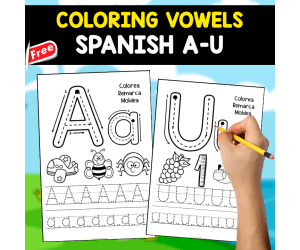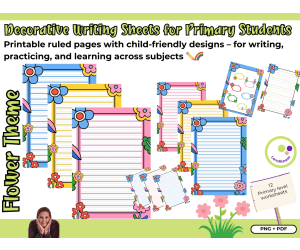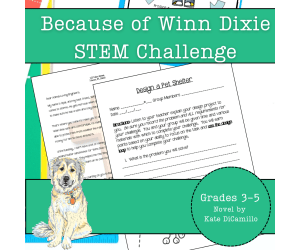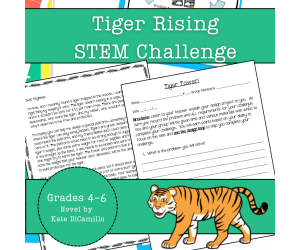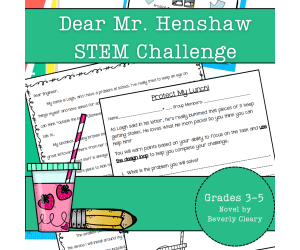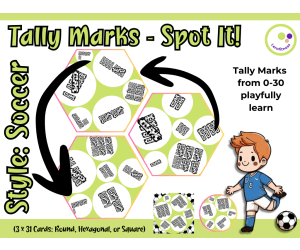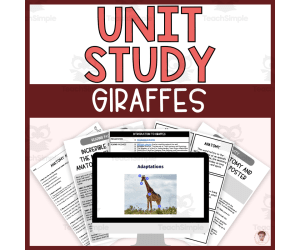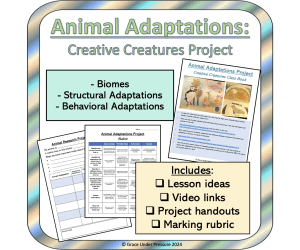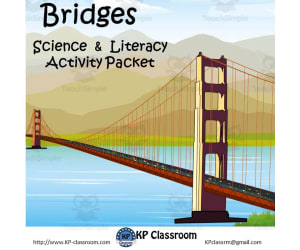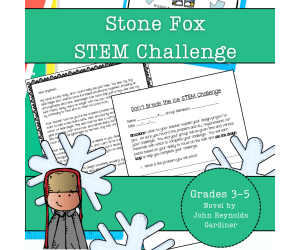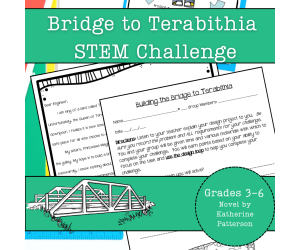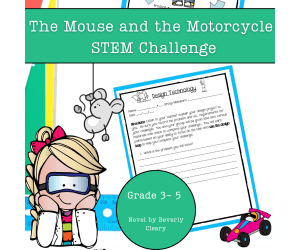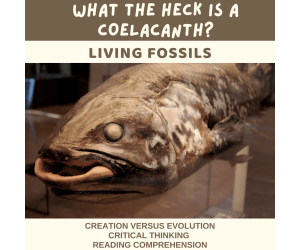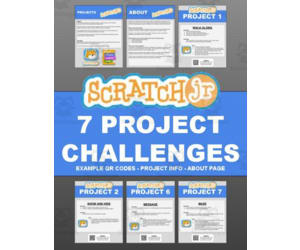4,794 products added recently
4th Grade Science Projects
Challenge your fourth graders with science projects that introduce more advanced topics. Investigate electricity and magnetism, delve into earth sciences, or study the solar system. These projects encourage students to think critically and apply their knowledge in new and exciting ways.
Color Foxgloves: Science Coloring Pages
Creative Arts, Art, Science, Life Sciences, Nature & Plants, Kindergarten, Preschool, Grade 1, Activities
Color Foxgloves: Science Coloring Pages Here is a picture of Foxgloves for children to colour this spring/summer! Who is this colouring picture of Holly for? Anybody. Older children will extend the activity further than younger ones, Suitable fro class use Suitable fro homeschool botany or nature study lessons, Charlotte Mason style. Uses for these colouring sheets Use to help children learn the name of Foxgloves and to recognise them. Use as part of a science lesson on plants/flowers/pollinators (as bees love Foxgloves!) Paint or colour. Use to make greeting card The study of the natural world is the foundation for the later study of science. The colouring of pictures of natural things, be it plants or animals is more than a pastime activity. It is a means of familiarising young children with these everyday subjects. The colouring of this Foxglove picture can of course be used as a pastime, or even as part of a creative lesson - the picture looks super made into a greeting card of all kinds. But it has the potential to teach much more. The Curriculum for Science expects children to be taught to use the local environment to study plants and animals, throughout the year. What better than to use familiar subjects - such as Foxgloves which is sure to attract attention in summer with their large, bright pink flowers? The name alone gives cause for thought: fox-gloves? And insects, especially bees can be seen following the trail on the landing pad up into the 'bell' to find nectar. There's plenty to talk about! Colouring can help children to become familiar with the parts of the Foxglove plant and ask questions: What are the leaves like? Why is there a pattern on the flower? What is inside a berry? (the nectar). Why do the flowers need the insects to pollinate them? Colouring a picture of Foxgloves can also help children become familiar with the particular characteristics of a plant - its shape, colour, and special features, for example. It is best if children colour the Foxglove picture following close observation, from reference books, or after looking at Foxgloves in real life. see if you can find them growing in the vicinity of your home/school. What is included in the pack? 1 sheet to be coloured 1 sheet giving an example of how the picture could be coloured.
Author Lilibette's Resources
Rating
Tags Colcour, Plants, Foxgloves, Flower, Wild Flowers, Summer, Nature Study, Charlotte Mason, Science Coloring Pages, Nature
TRACING AND COLORING SPANISH VOWELS 1 FREE RESOURCE
Foreign Languages, Spanish, ELA, Reading, Writing, Handwriting, Elementary, Early Learning, Pre-K, Activities, Worksheets & Printables
COLORING AND TRACING THE VOWELS | FREE RESOURCE INTRODUCTION: Hello! I thank you infinitely for your interest in my educational store! I am a teacher who strives every day to produce these great educational resources for children, so I thank you because with your downloads you are helping a lot to promote my personal and professional work. MAIN INFORMATION: 1. Product name: You can use this educational resource in the primary education classroom. 2. Number of pages: This document contains the following number of pages. 3. Is it editable or not? This educational document is not editable, because this way you can use it better and you will not have any problem with the composition or design undergoing any variation. 4. Theme: This educational resource contains a topic for the primary education of children. 5. Document version: This educational document is available in PDF version, size A4. SECONDARY INFORMATION: 6. Is it available in color or black/white? This document and/or set of educational sheets is available in color and also in certain parts contains black and white, however it is generally suggested that the teaching material be designed in color so that it is much more attractive for your students, awakening their attention and interest. 7. In what version is it available? This document is available in PDF version, A4 size, because we consider that this size is the original and most common standard. 8. Editable/Non-Editable: This educational document and/or set of educational sheets is not editable, because this way you will be able to use it much more easily. 9. Age at which it can be applied: This educational resource can be applied to children of all ages, that is, students from 3 to 12 years old, who must acquire some basic knowledge that thanks to this document they will be able to address. 10. Tags or keywords that describe the content: didactic material, teaching sheets, material for children, printable educational material, printable material.
Author EDITORIAL ARENAS EDUCATIVAS
Tags VOWELS, SPANISH, FREE RESOURCES, FREE, ESPAÑOL, VOCALES
Zoey And SASSAFRAS, DRAGONS And MARSHMALLOWS Bookmark and Poster Set
Science, Life Sciences, Animals, Grade 2, 3, 4, 5, Posters, Classroom Decor
Zoey and SASSAFRAS, DRAGONS, and MARSHMALLOWS Bookmark and Poster Set A vibrant teaching resource that pairs perfectly with the delightful children's book by Asia Citro. An excellent tool for educators aiming to merge scientific knowledge with engaging storytelling, designed particularly around key learning outcomes in grades 2 through 5. Resource components: Nine colorful bookmarks Eight informative posters The educational kit complements the enchanting story of Zoey's discovery of a baby dragon. An ideal way to boost student engagement while explaining scientific terminologies effectively. About the Bookmarks: Bookmarks enhance learners' reading experience by providing visual references from within the narrative. These can be used emerge during independent reading or group sessions or even as incentivizing prizes promoting active classroom participation. About the Posters : Similarly, every poster explains a term from vocabulary found within Zoeya's adventure: Carnivore, Cold-Blooded Conclusion, Herbivore, Hypothesis Mammal Omnivore Reptile Warm-Blooded- . They serve as both helpful visual aids and clear definitions facilitating better understanding of these terminologies. These visuals can be displayed on classroom walls during instruction times or self-study sessions proving constant reminders of concepts being learned. The PDF resource provides immediate use after purchase whether it’s displaying them at an audible read-aloud session or implementing at self-paced learning centers at school or home settings. In conclusion, By incorporating illustrated characters with scientifically relevant terms taken directly from Zoey’s adventurous book – this Bookmark & Poster Set goes beyond regular teaching aids; It fuels curiosity for science among young learners and makes complex subjects like zoology more accessible.
Author Socially Skilled Kids
Tags Bookmark, Poster, Teaching Resource, Science, Vocabulary, Zoey And Sassafras Dragons And Marshmallows
Decorative Writing Sheets for Primary Students
Science, Seasons, Holiday & Seasonal, Summer, Spring, Common Core, Handwriting, Writing, ELA, Language Development, Homeschool Templates, Grade 1, 2, 3, 4, 5, Activities, Worksheets & Printables, Worksheets, Projects, Classroom Decor, Bulletin Boards, Posters, Teacher Tools, Templates, Coloring Pages
Decorative Writing Sheets for Primary Students Printable ruled pages with child-friendly designs – for writing, practicing, and learning across subjects ✏️🌈 PNG + PDF These decorative worksheets were created especially for use in primary classrooms. Each sheet includes child-friendly rulings that support early writing skills and help students structure their ideas more clearly. What makes these pages extra special is their soft, coordinated design: the line colors match the surrounding illustrations, creating a calm and motivating look that many children really enjoy. Whether you're working on writing short stories, practicing letters, solving simple math problems, or even introducing music notation – these pages give students a visually appealing and structured space to work in. What’s included: A variety of printable worksheets with age-appropriate writing lines Gentle, decorative themes suited for younger learners Coordinated line colors for a neat and balanced appearance PDF format – ideal for printouts or digital notebooks (GoodNotes, Notability) PNG Format Classroom ideas: I’ve used these pages for journal entries, creative writing, dictations, and short-answer tasks. They’re also great as a “special” writing page for final versions of a story or when students present their work to the class. Many of my students take more care with their handwriting when they’re given a well-designed page to work on – a little aesthetic motivation goes a long way. Because the designs are subtle and not theme-locked, you can use them all year long. Some children even enjoy choosing their favorite version before starting a task – which can be a nice moment of autonomy in a structured lesson. These sheets are simple, flexible, and designed with classroom reality in mind – especially for younger learners who benefit from clear structure and a bit of visual encouragement. Best, Heike from Lernfitness Did You Know? I teach with a certified therapy dog, and together we create a positive and welcoming learning environment. 🐶
Author Lernfitness
Rating
Tags Activity Sheets, Spring, Summer, Decorative Pages, Writing, Drawing, Custom Classroom Materials, Seasonal, Worksheets, Primary Students
Because of Winn Dixie STEM Experiment + STEM Project for Grades 3-5
Science, Technology, Engineering, STEM, Grade 3, 4, 5, Experiments, Activities, Projects, Diagrams, Teacher Tools, Graphic Organizers, Rubrics
Engage your students in a hands-on STEM challenge inspired by Because of Winn-Dixie! This exciting activity combines engineering, creativity, and problem-solving as students design and build a pet-friendly shelter for Winn-Dixie, the lovable dog who’s afraid of storms. Perfect for blending literature with science, this challenge encourages young minds to apply engineering principles using simple materials, all while developing teamwork, critical thinking, and innovation. What’s Included in This Resource: Student Letter: An engaging letter from Opal invites students to participate in the challenge, drawing a direct connection between the story’s problem and the real-world task. The Design Loop Visual: This visual aid is a great tool for students to glue into their science journals for easy reference. It can easily be enlarged as a classroom poster. Step-by-Step Directions: Detailed instructions that can be printed or written into science journals for a hands-on approach. These directions ensure that students stay on track while working through each part of the challenge. Teacher Notes: Helpful guidance to assist you in creating a clear problem statement, establishing success criteria, and setting time limits and materials. Tailor these instructions to fit your classroom’s needs. Key Skills Developed: ✔ Problem-Solving: Encourage students to identify challenges and develop creative, effective solutions. ✔ Engineering Design: Teach the design process by having students follow the design loop to plan, construct, test, and refine their pet shelters. (Discussing area and perimeter will enhance this design specifically.) ✔ Critical Thinking: Help students evaluate their designs, analyze their prototypes, and identify ways to improve them. ✔ Collaboration: Foster teamwork as students collaborate to achieve a common goal. Flexible Classroom Use: This STEM challenge is perfect for guided instruction or as part of a broader literature and science unit. It provides an opportunity for students to connect their love of reading with real-world applications, improving both their scientific knowledge and creative abilities. Why Teachers Love It: ⭐ “My students were so engaged! It brought their love for reading into STEM learning.” ⭐ “This activity is simple to set up and promotes creativity and teamwork.” ⭐ “The combination of literature and science created an ideal cross-curricular experience for my class.” Inspire your students to help Winn-Dixie solve his stormy dilemma and ignite their passion for engineering with this fun, standards-aligned STEM challenge!
Author Kel's Klass
Tags 4th Grade Science Project, 4th Grade Science Experiment, 5th Grade Science Project, 5th Grade Science Experiment, Engineering Diagram, Science Graphic Organizer, Science Rubric, Because Of Winn Dixie, 3rd Grade Science Project, 3rd Grade Science Experiment
Tiger Rising STEM Experiment + STEM Project for Grades 4, 5, 6
Science, Technology, Engineering, STEM, Grade 4, 5, 6, Experiments, Activities, Projects, Diagrams, Teacher Tools, Graphic Organizers, Rubrics
This hands-on activity combines creativity and problem-solving as students design and build a tower for the safety of the tiger in the novel, Tiger Rising. Perfect for integrating literature and science, this challenge encourages students to apply engineering principles using simple materials while fostering teamwork and critical thinking. What’s Inside This Resource: Student Letter: A letter from Rob Horton introduces the challenge, linking the story to a real-world engineering task. Design Loop Graphic: A visual students can attach to their science journals, serving as a step-by-step guide throughout the activity. Detailed Instructions: Choose to print the guide as a packet or have students record each stage in their journals for an interactive experience. Teacher Tips: Practical guidance for crafting a clear problem statement with time constraints, materials, and success criteria tailored to your classroom. Skills Your Students Will Build: ✔ Problem-Solving: Identify obstacles and create inventive solutions. ✔ Engineering Design: Navigate the design loop—plan, construct, test, and refine. This page can easily be enlarged for a classroom poster. ✔ Critical Thinking: Assess their prototype’s performance and pinpoint ways to enhance it. ✔ Teamwork: Collaborate effectively to accomplish shared goals. Versatile Classroom Application: Whether as guided instruction or part of an integrated literature and science unit, this STEM activity encourages students to think creatively, document their process, and meet science and engineering standards. The rubric included is based on engineering concepts, but can also be used as a nonfiction writing rubric for cross-curricular options. Why Educators Love This Resource: ⭐ “My students were fully engaged, combining their passion for reading with STEM!” ⭐ “Simple to set up and encourages creativity and teamwork.” ⭐ “A seamless connection between literature and science for cross-curricular learning!” Encourage your students to provide a safe haven for the tiger (and Rob and Sistine?) and experience the excitement of engineering with this standards-aligned STEM adventure!
Author Kel's Klass
Tags 4th Grade Science Project, 4th Grade Science Experiment, 5th Grade Science Project, 5th Grade Science Experiment, 6th Grade Science Project, 6th Grade Science Experiment, Engineering Diagram, Science Graphic Organizer, Science Rubric, Tiger Rising
Stephen Hawking Biography Set | Integrated Study | Sub Plan
Social Studies, ELA, Biographies, Reading, Reading Comprehension, Science, Inventors, Grade 3, 4, 5, Activities, Projects
This Stephen Hawking Biography Set is a collection of activities focusing on the life, achievements, and legacy of Stephen Hawking. Made for 3rd to 5th grade primary level learners, this resource is perfect for lessons relating to biographies of important and famous people in subjects like English Language Arts, Science, and Social Studies. What’s Included: 1.Reading Passage (Stephen Hawking: The Brilliant Scientist) 2.3 The Brilliant Scientist Reading Comprehension Exercises 3.3 The Brilliant Scientist Research Activities 4.The Brilliant Scientist Pop-Up Board Project The reading passage gives the information for students to learn about Stephen Hawking. The reading comprehension activities are focused on checking and aligning the students’ learning and knowledge about what they just read. They are also a perfect tool for class discussions and assessments. The research set of activities are engaging way for them to explore more about the topic and create their own learning. The final project Pop-Up board on Stephen Hawking is a perfect assessment tool that is hands-on, creative and encouraging for students to present what they learned from the lesson. This resource is a perfect addition and supplemental tool in lessons related to biography. This can also be used for teacher emergencies and sub plans.
Author It's Teacher L
Tags Famous People, Stephen Hawking Biography, Reading Comprehension, Scientist Projects
Dear Mr. Henshaw STEM Experiment + STEM Project for Grades 3, 4, 5
Science, Technology, Engineering, STEM, Grade 3, 4, 5, Experiments, Activities, Projects, Diagrams, Teacher Tools, Graphic Organizers, Rubrics
Leigh Botts from Dear Mr. Henshaw needs your help! This STEM project encourages problem-solving as students plan and construct a device that will help protect Leigh's lunch from a sneaky thief. Perfect for blending literature with science, it allows students to explore engineering concepts using simple supplies while promoting teamwork and critical thinking. What’s Inside This Resource: Student Letter: A pleading letter from Leigh introduces the challenge, linking the story to a real-world engineering task. Design Loop Graphic: A visual students can attach to their science journals, serving as a step-by-step guide throughout the activity. Detailed Instructions: Choose to print the guide as a packet or have students record each stage in their journals for an interactive experience. Teacher Tips: Practical guidance for crafting a clear problem statement with time constraints, materials, and success criteria tailored to your classroom. Skills Your Students Will Build: ✔ Problem-Solving: Identify obstacles and create inventive solutions. ✔ Engineering Design: Navigate the design loop—plan, construct, test, and refine. This page can easily be enlarged for a classroom poster. ✔ Critical Thinking: Assess their prototype’s performance and pinpoint ways to enhance it. ✔ Teamwork: Collaborate effectively to accomplish shared goals. Versatile Classroom Application: Whether as guided instruction or part of an integrated literature and science unit, this STEM activity encourages students to think creatively, document their process, and meet science and engineering standards. The rubric included is based on engineering concepts, but can also be used as a nonfiction writing rubric for cross-curricular options. Why Educators Love This Resource: ⭐ “My students were fully engaged, combining their passion for reading with STEM!” ⭐ “Simple to set up and encourages creativity and teamwork.” ⭐ “A seamless connection between literature and science for cross-curricular learning!” Encourage your students to solve Leigh’s challenge and experience the excitement of engineering with this standards-aligned STEM adventure!
Author Kel's Klass
Tags 4th Grade Science Project, 4th Grade Science Experiment, 5th Grade Science Project, 5th Grade Science Experiment, Engineering Diagram, Science Graphic Organizer, Science Rubric, 3rd Grade Science Project, 3rd Grade Science Experiment, Dear Mr. Henshaw
Astronauts | Astronaut Report | Research Project
Science, Earth and Environmental Sciences, Space, Research, Grade 4, 5, 6, Projects, Activities
Engage your students with this fun and comprehensive Astronaut Research Report resource. It helps has make report writing easy! It contains Geography questions, organizers, tools and forms to use for your students to create, develop, write, edit, illustrate, present, and assess your students’Astronaut Research Report This report (or performance task) is also designed to not only to learn and explain the new information, but answer some higher level thinking questions (Common Core Essential Questions) to apply the knowledge they have learned. This resource can be for their formal report or utilized as a study guide to develop their report for them to type or write on their own. This packet is designed for you to pick and choose the parts of the report that you’d like to use, or just use it all! There are many text dependent questions for your students to research and cite their evidence of where they found the information, a vocabulary section, and some essential questions where your students can apply the knowledge they have learned at a deeper, higher level. We encourage you to have your students use a wide variety of resources to gather the necessary information to complete this report. This packet contains the following: Template includes: Questions about the factual information about many aspects of Astronauts Biography pages for choosing an astronaut to research Essential Questions designed for application of knowledge and higher level thinking A page to help your students find information for their report. Resource page and Bibliography Template- I use the Resource Page template because my students are not ready to learn the rules of a true bibliography, but if you teach bibliography skills I have included a template for you. Note Taking page for students to take notes and a note taking page in bullet format. Copy as needed. Rubrics - Performance Task for the Written Report Editing and Revising Checklist. Teacher Notes and Ideas.
Author The Teacher Team
Tags Astronomy Research, Astronaut Life, Astronaut Report, Research Project, Outer Space Printable, Astronaut Project Ideas
Tally Marks Game – Learning to Count with a Soccer Twist
Montessori, Math, Numbers, Early Math, Counting, Algebra, Decimals, Science, STEM, Special Resources, Preschool, Grade 1, 2, 3, 4, 5, 6, Activities, Games, Worksheets & Printables, Task Cards, Quizzes and Tests, Teacher Tools, Quizzes, Projects, Flashcards
Tally Marks Game – Learning to Count with a Soccer Twist Similar to Dobble / Spot it! A hands-on matching game for grades 1–6 (PDF – Dobble / Spot It! style) ⚽📊 This resource is a playful way to help students practice tally marks while staying active and engaged. The game is based on the popular “Find the Twin” concept (similar to Dobble or Spot It!) and helps children recognize and count tally lines quickly and confidently. Each card shows six symbols – including different tally mark patterns – and players have to find the matching pair between any two cards. The game encourages concentration, quick visual comparison, and number recognition, all while reinforcing how tally marks work. What’s included: 93 cards total → 3 full sets with 31 cards each 3 versions: → round cards → cut-friendly square cards → hexagonal cards All with clear, child-friendly visuals Instructions for flexible classroom use How I’ve used it in class: I like to use this game in small math stations or as a warm-up activity. It’s also a favorite for early finishers or during quieter times when a bit of movement and interaction is helpful. You can laminate the cards for long-term use, or simply print them on heavier paper. The game works in pairs or small groups – and students pick up the rules quickly. Beyond basic counting, the game helps introduce how we group numbers for clarity, which is a useful step toward early data handling and bar graphs. And the sporty theme adds just the right amount of energy. Print, cut, and play – no prep needed, and lots of learning packed into a simple activity. Warm regards, Lernfitness Did You Know? I teach with a certified therapy dog, and together we focus on creating a positive and inspiring learning environment.
Author Lernfitness
Rating
Tags Math, Foreign Languages, Game, Spot It, Educational Card Games, Visual Math Activity, Find The Match, Tally Marks, Tally Charts
Number the Stars STEM Experiment + STEM Project for Grades 4, 5, 6
Science, Technology, Engineering, STEM, Grade 4, 5, 6, Experiments, Activities, Projects, Diagrams, Teacher Tools, Graphic Organizers, Rubrics
This hands-on activity combines creativity and problem-solving as students design and build a basket for Anne Marie to get the package safely to Uncle Henrik, based on the novel Number the Stars! Perfect for integrating literature and science, this challenge encourages students to apply engineering principles using simple materials while fostering teamwork and critical thinking. What’s Inside This Resource: Student Letter: A letter from Anne Marie introduces the challenge, linking the story to a real-world engineering task. Design Loop Graphic: A visual students can attach to their science journals, serving as a step-by-step guide throughout the activity. Detailed Instructions: Choose to print the guide as a packet or have students record each stage in their journals for an interactive experience. Teacher Tips: Practical guidance for crafting a clear problem statement with time constraints, materials, and success criteria tailored to your classroom. Skills Your Students Will Build: ✔ Problem-Solving: Identify obstacles and create inventive solutions. ✔ Engineering Design: Navigate the design loop—plan, construct, test, and refine. This page can easily be enlarged for a classroom poster. ✔ Critical Thinking: Assess their prototype’s performance and pinpoint ways to enhance it. ✔ Teamwork: Collaborate effectively to accomplish shared goals. Versatile Classroom Application: Whether as guided instruction or part of an integrated literature and science unit, this STEM activity encourages students to think creatively, document their process, and meet science and engineering standards. The rubric included is based on engineering concepts, but can also be used as a nonfiction writing rubric for cross-curricular options. Why Educators Love This Resource: ⭐ “My students were fully engaged, combining their passion for reading with STEM!” ⭐ “Simple to set up and encourages creativity and teamwork.” ⭐ “A seamless connection between literature and science for cross-curricular learning!” Empower your students to solve Anne Marie's immediate need and experience the excitement of engineering with this standards-aligned STEM adventure!
Author Kel's Klass
Tags 4th Grade Science Project, 4th Grade Science Experiment, 5th Grade Science Project, 5th Grade Science Experiment, 6th Grade Science Project, 6th Grade Science Experiment, Engineering Diagram, Science Graphic Organizer, Science Rubric, Bridge To Terabithia
Giraffe Unit Study
Creative Arts, Art, ELA, Reading, Reading Comprehension, Grammar, Language Development, Vocabulary, Spelling, Writing, Science, Life Sciences, Animals, Human Body, Biology, Grade 3, 4, 5, Activities, Crafts, Teacher Tools, Lesson Plans, Presentations, Graphic Organizers, Projects, Assessments, Worksheets & Printables, Worksheets
Giraffe Unit Study The Giraffe Unit Study presents a captivating method to both introduce and expand students' understanding about giraffes. This ready-to-go unit study is structured primarily for elementary teachers and homeschooling parents, enhancing students' knowledge of giraffes through interactive activities. Targeted Learning Styles & Diverse Topics The unit throws light on varied topics such as interactions between giraffes and other species, human impact on their population, scientific research etc which in turn nurtures curiosity in kids. Online presentations with pre-recorded voiceovers for visual and auditory learners Reading passages for bookworms Note-taking pages integrated with graphic organizers for the writers at heart are some of the formats used. Crafting sessions encourage creativity while learning about these fascinating creatures. Inclusive Lessons & Additional Resources All lessons are shaped keeping differential learning styles in mind therefore increasing inclusivity among all students irrespective of their cognitive abilities. The curriculum is further enriched with: Vocabulary word cards paired with dictionary work, Comprehension worksheets from various reading passages, Discussion questions following each lesson as well as regular assessments to keep track of student's comprehension skills. Cross-Curricular Subjects & Scientific Insights Included! The hands-on activities like crafting not only demand active participation but also creatively connect Art (drawing), English language arts along with geography - all seamlessly woven together! It also introduces key scientific topics such as anatomy & physiology providing valuable insights into giraffe adaptations because every learner deserves to know how unique these grassland inhabitants are! The exploration into conservation and scientific research is a cherry on top! Fuel for Imagination & Independent Thinking The avenues of usage include group exploration outdoors, small group discussions, individual homework assignments or even co-reading sessions. The possibilities are limitless! With the Giraffe Unit Study, every aspect has been carefully planned out with each young learner's academic journey at the heart because education should never be mundane and it won't be, thanks to this unit.
Author Heather Huhman
Tags Giraffes, Unit Study, Interactive Activities, Science Education, Conservation Efforts
Animal Project: Creative Creatures - Biomes, Structural, and Behavioral Adaptations
Science, Life Sciences, Biology, Earth and Environmental Sciences, Environmental Science, Research, Grade 4, 5, 6, 7, Activities, Projects
Here's a middle grades science project (for grades 4-7) that will let your students use their creativity to apply their knowledge of biomes and adaptations as they complete research, integrate knowledge from several sources, type a report, and make a detailed diagram ! How to Use: Assign each student an animal or let them chose their own. They need to research that animal’s biome and the adaptations the animal currently has. Next, each student chooses a different biome and moves their animal there. They must use their imagination and logic to predict the adaptations the animal would develop in the new biome. Once each student has completed their notes, they can type or write a report to present the information. I encouraged my students to make a four-paragraph report: Paragraph one: describe initial biome Paragraph two: describe initial adaptations Paragraph three: describe new biome Paragraph four: describe new adaptations Students also create their own visual image of their creative creature (labels encouraged). I like to put all the reports and images together into a class book. This is fun way to showcase the students’ hard work. I have included the title page I use for our class book. I have also included the rubric I use to assess the projects. Graces to Use With: This product is appropriate for students in grades 4-7 depending on when your science curriculum includes biomes, structural/physical and behavioural adaptations, or diversity of life standards. What's Included: A total of 6 pages in PDF Format: - Lesson ideas, links and videos to teach students about biomes and structural and behavioural adaptations. - A 2-page graphic organizer for students to take notes as they complete research. - A rubric to assess the final project. - A title page for your completed class book. If you enjoy this science project, check out some other options in my store: STEM Project: Extreme Environment Technology Design and "Shark Tank" Presentation Science Project: Animal Classes Wanted Posters Controlling Variables in Science Experiments: Independent, Dependent and Controlled
Author Grace Under Pressure
Tags Animal Project, Biomes, Animal Adaptations, Biology, Adaptation, Science Project, Natural Selection, Evolution, Structural And Behavioral Adaptations, Science Report
Bridges Activity Packet with Popsicle Stick Bridge Project
Science, Technology, Engineering, Grade 2, 3, 4, 5, 6, Projects, Activities
This " Bridges Activity Packet with Popsicle Stick Bridge Project " teaches students about bridges and engineering in a fun and interactive way, with many reading, drawing and puzzle activities. These activities are designed for kids at all levels between Grades 2 and 6. Please note that not all activities in this packet will meet your class' particular levels, but there should be enough variation in the resources from your high flyers to those that are more challenged. The packet also includes a Popsicle Bridge Project for students.
Author KP Classroom
Tags Bridge, Engineer, Truss, Beam, Cabtilever, Popsicle Stick Suspension Bridge, Stick Bridge Project, Stick Bridges, Popsicle Bridges, Suspension Bridges Made Out Of Popsicle Sticks, Popsicle Stick Truss Bridge, Popsicle Bridge Ideas, Popsicle Stick Bridges Truss, Popsicle Arch Bridges, Popsicle Truss Bridge, Popsicle Stick Arch Bridges, Popsicle Stick Bridge Projects, Simple Popsicle Stick Bridges, Popsicle Stick Bridges For Kids
Steve Jobs Biography Set | Integrated Study | Sub Plan
ELA, Social Studies, Reading, Reading Comprehension, Science, Inventors, Grade 3, 4, 5, Activities, Projects
This Steve Jobs Biography Set is a fun and engaging study about the life, contributions, achievements and legacy of Steve Jobs. Created for 3rd to 5th primary level learners, EFL/ESL, and homeschoolers, this resource is a meaningful and diverse tool to have in subjects associated with English Language Arts, Science, and Social Studies. This resource contains the following: •Steve Jobs Reading Passage (Steve Jobs: The Inventor of Apple) •3 The Inventor of Apple Reading Comprehension Exercises •3 The Inventor of Apple Research Activities •Steve Jobs Pop-Up Board Project With the reading passage, the students will learn the biography of Steve Jobs and equip them with the necessary knowledge to accomplish and practice their language skills for the reading comprehension activities. The accompanying research activities encourage the learners to find out more about Steve Jobs in any other resources like their schoolbooks or the internet. The pop-up board project is another form of assessment tool that can be used to after the lessons about the biography of Steve Jobs. This hands-on, creative project can be done as an individual or group project for the learners to have a concrete expression of what they have learned. Thus, the reading passage, comprehension works, and research activities are ways for students to accomplish the project. This resource can be used in so many way. First, the activities can be used as supplemental tool in teaching biographies of notable people, specifically of Steve Jobs. The whole set can also be a useful inclusion for sub plans or any other teacher-emergencies that may arise. The pop-up board project can also be a great addition as show pieces for open house events or as classroom decorations.
Author It's Teacher L
Tags Steve Jobs, Steve Jobs Biography, Biography, Reading Comprehension, ESL/EFL
Human Body System and Some Main Organs Lapbook
ELA, Reading, Reading Comprehension, Science, Life Sciences, Human Body, Biology, Research, Grade 4, 5, 6, Activities, Projects
Human Body System and Some Main Organs Lapbook is a project for lessons on body systems and / or main organs of the body. It can be a supplemental work and assessment tool for Science lessons on these topics that is aimed to showcase what the learners learn through this creative medium. This file contains two sets of lapbooks for male and female body systems. This project features a distinctive representations of the body systems and main organs that are easy to distinguish and understand. Each component of the lapbook is designed to be entertaining and engaging that will surely keep your young minds active and occupied!
Author It's Teacher L
Tags Assessment, Homework, Lapbook, Science Lapbook, ELA, Research Project
Scientists and Inventors Social Media Profile Project | Biography
ELA, Social Studies, Writing, Creative Writing, Science, Inventors, Biographies, Research, Grade 4, 5, 6, Activities, Projects
Explore the lives and achievements of notable and remarkable genius minds from different generations with this Scientists and Inventors Social Media Profile Project. This resource is made for 4th, 5th and 6th primary grade level learners, EFL/ESL students, and homeschoolers that can be used for English Language Arts and Science and Technology subjects. The project is aimed to develop the students’ language skills, research proficiency, and creative skills through the imagined social media profile of their chosen scientists or inventors. Featuring 12 genius minds from different ages and fields, these activities are a sure win in capturing the attention and unleashing the creativity of the learners as they learn and explore the lives and achievements of these scientific geniuses. The activities included in this set are: 1. 12 Scientists and Inventors Worksheets (Albert Einstein, J. Robert Oppenheimer, Alexander Graham Bell, Galileo Galilei, Stephen Hawking, Steve Jobs, Isaac Newton, Charles Darwin, Nicolaus Copernicus, Nikola Tesla, Thomas Edison, Leonardo da Vinci) 2. 1 colored Albert Einstein Sample Profile 3. 1 Profile Template 4. Lesson Plan 5. Student’s Instructions Page 6. List of Scientists and Inventors 7. Feedback Rubric This project is designed as supplemental activity or project for lessons relating to lives and achievements of notable and famous scientists and inventors from different generations and fields, and biography lessons or topics in the curriculum. This can also be used as assessment tool for the said lessons, teacher-friendly resource for emergencies and sub plans. With the fun and engaging nature of this project, it will definitely achieve your lesson objectives as well as collecting amazing outputs from your learners!
Author It's Teacher L
Tags Scientists Biographies, Inventors Biographies, Biography Project, ELA Activities, Biography Research
Stone Fox STEM Experiment + STEM Project for Grades 3, 4, 5
Science, Technology, Engineering, STEM, Grade 3, 4, 5, Experiments, Activities, Projects, Diagrams, Teacher Tools, Graphic Organizers, Rubrics
Little Willy is looking for a way to build a sled that will honor Searchlight, in this STEM project inspired by Stone Fox. This science project encourages problem-solving as students plan and construct a sled that will be able to carry Willy safely across a block of ice. Perfect for blending literature with science, it allows students to explore engineering concepts using simple supplies while promoting teamwork and critical thinking. What’s Inside This Resource: Student Letter: A heartfelt letter from Little Willy introduces the challenge, linking the story to a real-world engineering task. Design Loop Graphic: A visual students can attach to their science journals, serving as a step-by-step guide throughout the activity. Detailed Instructions: Choose to print the guide as a packet or have students record each stage in their journals for an interactive experience. Teacher Tips: Practical guidance for crafting a clear problem statement with time constraints, materials, and success criteria tailored to your classroom. Skills Your Students Will Build: ✔ Problem-Solving: Identify obstacles and create inventive solutions. ✔ Engineering Design: Navigate the design loop—plan, construct, test, and refine. This page can easily be enlarged for a classroom poster. ✔ Critical Thinking: Assess their prototype’s performance and pinpoint ways to enhance it. ✔ Teamwork: Collaborate effectively to accomplish shared goals. Versatile Classroom Application: Whether as guided instruction or part of an integrated literature and science unit, this STEM science project encourages students to think creatively, document their process, and meet science and engineering standards. The rubric included is based on engineering concepts, but can also be used as a nonfiction writing rubric for cross-curricular options. Why Educators Love This Resource: ⭐ “My students were fully engaged, combining their passion for reading with STEM!” ⭐ “Simple to set up and encourages creativity and teamwork.” ⭐ “A seamless connection between literature and science for cross-curricular learning!” Encourage your students to help Little Willy achieve his goals and experience the excitement of engineering with this standards-aligned STEM adventure!
Author Kel's Klass
Tags 4th Grade Science Project, 4th Grade Science Experiment, 5th Grade Science Project, 5th Grade Science Experiment, Engineering Diagram, Science Graphic Organizer, Science Rubric, 3rd Grade Science Project, 3rd Grade Science Experiment, Stone Fox
Bridge to Terabithia STEM Experiment + STEM Project for Grades 4, 5, 6
Science, Technology, Engineering, STEM, Grade 4, 5, 6, Experiments, Activities, Projects, Diagrams, Teacher Tools, Graphic Organizers, Rubrics
Bring literature to life with this exciting STEM activity inspired by Bridge to Terabithia! This challenge sparks creativity and problem-solving as students plan and construct a bridge for King Jesse as he plans to make entrance to Terabithia safer. Perfect for blending literature with science, it allows students to explore engineering concepts using simple supplies while promoting teamwork and critical thinking. What’s Inside This Resource: Student Letter: A letter from Jesse introduces the challenge, linking the story to a real-world engineering task. Design Loop Graphic: A visual students can attach to their science journals, serving as a step-by-step guide throughout the activity. Detailed Instructions: Choose to print the guide as a packet or have students record each stage in their journals for an interactive experience. Teacher Tips: Practical guidance for crafting a clear problem statement with time constraints, materials, and success criteria tailored to your classroom. Skills Your Students Will Build: ✔ Problem-Solving: Identify obstacles and create inventive solutions. ✔ Engineering Design: Navigate the design loop—plan, construct, test, and refine. This page can easily be enlarged for a classroom poster. ✔ Critical Thinking: Assess their prototype’s performance and pinpoint ways to enhance it. ✔ Teamwork: Collaborate effectively to accomplish shared goals. Versatile Classroom Application: Whether as guided instruction or part of an integrated literature and science unit, this STEM activity encourages students to think creatively, document their process, and meet science and engineering standards. The rubric included is based on engineering concepts, but can also be used as a nonfiction writing rubric for cross-curricular options. Why Educators Love This Resource: ⭐ “My students were fully engaged, combining their passion for reading with STEM!” ⭐ “Simple to set up and encourages creativity and teamwork.” ⭐ “A seamless connection between literature and science for cross-curricular learning!” Empower your students to solve Jesse’s challenge and experience the excitement of engineering with this standards-aligned STEM adventure!
Author Kel's Klass
Tags 4th Grade Science Project, 4th Grade Science Experiment, 5th Grade Science Project, 5th Grade Science Experiment, 6th Grade Science Project, 6th Grade Science Experiment, Engineering Diagram, Science Graphic Organizer, Science Rubric, Bridge To Terabithia
Robert Oppenheimer Biography Set | Integrated Study | Sub Plan
ELA, Social Studies, Reading, Reading Comprehension, Science, Basic Science, Biographies, Grade 3, 4, 5, Activities, Worksheets & Printables, Worksheets, Projects
Make learning about the life and works of J. Robert Oppenheimer more fun and exciting with this J. Robert Oppenheimer Biography Set! This set of activities and project is designed for 3rd to 5th grade primary level learners, ESL/EFL students, and homeschoolers. Focusing on an in-depth and purposeful review of Oppenheimer’s biography, this resource is an integrated lesson for English Language Arts, Science and Social Studies. What’s Included: •J. Robert Oppenheimer Reading Passage (J. Robert Oppenheimer: The Father of the Atomic Bomb) •3 The Father of the Atomic Bomb Reading Comprehension Exercises •The Father of the Atomic Bomb Research Activities •J. Robert Oppenheimer Pop-Up Board Project The reading passage provides information for the students, and with the use of the reading comprehension activities, they will be able to check on their knowledge and understanding of Oppenheimer as one of the important minds of the world. The research activities, on the other hand, are aimed for a more detailed examination of Oppenheimer’s contributions and legacies ensuring a better outlook of the students’ appreciation of the lesson. Lastly, the pop-up board project is a perfect assessment tool of the lesson which is made to promote creativity and deeper engagement. This biography set is a great companion and supplement to any curriculum topics relating to famous people, studying biographies and exploring the most famous scientific minds. It also provides an opportunity for substitute and / or emergency plans as it presents a clear-cut set of activities. Studying and completing this biography set it definitely a blast for your learners!
Author It's Teacher L
Tags Oppenheimer Biography, STEM Education, Influential Minds, Famous People, Biographies, Reading Comprehension, Research Activities
Star Constellations Art Activity: Animal Constellations Art Project
Creative Arts, Earth and Environmental Sciences, Science, Art, Grade 1, 2, 3, 4, Activities, Crafts, Projects
Learn all about 4 of the animal constellations through this easy to make art activity. This hands-on activity works great for elementary-aged kids in the classroom or at home. Step 1: Gather supplies. This includes printed worksheets, art supplies, tape, scissors, and straws. Feel free to use recycled straws to make this art activity more eco-friendly! Step 2: Color or draw, The beginner level worksheets have pre-drawn image of Leo the Lion, Ursa Major the Bear, Cygnus the Swan, and Scorpius the Scorpion. Kids can choose to color them in, or draw their own following the intermediate level guide. Step 3: Cut out the animals. Step 4: Tape straws to the back of animals. Step 5: Head outside and look up into the night sky. Find the constellations! Not sure how to find the constellations? There are loads of apps that you can download to your phone and start using! Happy ARTventuring :) -Abbey Allen ARTventurous Animals
Author ARTventurousanimals
Rating
Tags Constellation, Stars, Star Activity, Free, Art Activity, Constellation Art, Star Art, Star Art Activity
Climate Zones Activity for Kids: Weather and Climate Project
Social Studies, Geography, Science, Earth and Environmental Sciences, Earth Sciences, Grade 2, 3, 4, 5, Activities, Projects, Worksheets & Printables, Worksheets
🌍 Expand your child’s global awareness with our engaging Climate Zone Project ! 🌍 Many children perceive the world through their own experiences, often unaware that the weather and seasons they enjoy are unique to their region. 🌍 This educational project introduces kids to the fascinating 5 Koppen Climate Zones: Dry, Tropical, Temperate, Continental, and Polar, all through the captivating lens of five different animals 🦘🦍🐼🐿️🦭. 🌍 As they explore and select their preferred climate zones, young learners will embark on a creative journey, sketching vivid depictions of each zone. This artistic element is designed to stimulate the creative right side of their brains! 🌍 By the project 's conclusion, they will proudly possess a fully completed CLIMATE DISK, perfect for display or imaginative play. 📚 Appropriate for Grades 2nd-6th 📄 Format: PDF 📖 Total Pages: 18 📏 Aligned with NGSS 3-ESS2-2 Earth's Systems (Master the ability to gather and integrate information to describe climates in various regions across the globe.) Check out an up-close preview here ! https://www.canva.com/design/DAFjehKX8cE/S4QWqk59S0fACS9Z-IW7WQ/view?utm_content=DAFjehKX8cE&utm_campaign=designshare&utm_medium=link&utm_source=publishsharelink So what’s included? -Weather Type project with custom-designed Project Pieces -Teacher and Student Guides on how to make the project -Learning Pages introducing and developing the NGSS topics through an animal story -Exit Ticket and Answer Key HOW TO USE: -All-inclusive lesson on climate zones -Supplemental project to climate zones -Independent project
Author ARTventurousanimals
Tags Climate Project, Climate Activity, Climate Project For Kids, Climate Activity For Kids, Climate Zones Activity, Climate Zones Project
The Mouse and the Motorcycle STEM Experiment + STEM Project
Science, Technology, Engineering, STEM, Grade 3, 4, 5, Experiments, Activities, Projects, Diagrams, Teacher Tools, Graphic Organizers, Rubrics
Help design and build a four-wheeled car for Ralph, the adventurous mouse, from The Mouse and the Motorcycle. Perfect for integrating literature and science, this challenge guides students to apply engineering principles using simple materials while fostering teamwork and critical thinking. What’s Inside This Resource: Student Letter: A fun letter from Ralph introduces the challenge, linking the story to a real-world engineering task. Design Loop Graphic: A visual students can attach to their science journals, serving as a step-by-step guide throughout the activity. Detailed Instructions: Choose to print the guide as a packet or have students record each stage in their journals for an interactive experience. Teacher Tips: Practical guidance for crafting a clear problem statement with time constraints, materials, and success criteria tailored to your classroom. Skills Your Students Will Build: ✔ Problem-Solving: Identify obstacles and create inventive solutions. ✔ Engineering Design: Navigate the design loop—plan, construct, test, and refine. This page can easily be enlarged for a classroom poster. ✔ Critical Thinking: Assess their prototype’s performance and pinpoint ways to enhance it. ✔ Teamwork: Collaborate effectively to accomplish shared goals. Versatile Classroom Application: Whether as guided instruction or part of an integrated literature and science unit, this STEM activity encourages students to think creatively, document their process, and meet science and engineering standards. The rubric included is based on engineering concepts, but can also be used as a nonfiction writing rubric for cross-curricular options. Why Educators Love This Resource: ⭐ “My students were fully engaged, combining their passion for reading with STEM!” ⭐ “Simple to set up and encourages creativity and teamwork.” ⭐ “A seamless connection between literature and science for cross-curricular learning!” Inspire your students to solve Ralph’s problem and discover the joy of engineering with this fun, standards-aligned STEM challenge!
Author Kel's Klass
Tags 4th Grade Science Project, 4th Grade Science Experiment, 5th Grade Science Project, 5th Grade Science Experiment, Engineering Diagram, Science Graphic Organizer, Science Rubric, 3rd Grade Science Project, 3rd Grade Science Experiment, The Mouse And The Motorcycle
Pumpkin Investigation
ELA, Writing, Science, Basic Science, Math, Measurements, Grade 3, 4, 5, Activities, Projects
Pumpkin Investigation This pumpkin investigation aligns with science, math, and writing opportunities for grades three through five, if students are prepped accordingly. Students need to be in the mindset of scientists and serious observers or mathematicians. If you are in an area where pumpkins are a main crop, it is beneficial to connect it to your local economics, as well. This cross curricular, hands-on opportunity allows for parent or other staff volunteers and a small group setting for investigation. Included in this product: Teacher notes for how to implement the project in class Nonfiction reading passage explaining scientist skills like observation and communication A pumpkin observation packet, leading students through estimations, observations, and measurements of a pumpkin (either individual or in a group. Some pages have standard measurement and others have metric A rubric for grading the packet Intended for science grading, but could also be used for math if points were specific to those skills Parent permission notes for students to participate Parent volunteer letter and guidelines Supplies Needed: 1 pumpkin per group Newspaper or butcher paper – to cover desks or tables Bucket (0r buckets) filled with water – towels to dry Baby/bathroom scale Cloth/flexible tape measures Large spoons or scoops Adults willing to use knives Next Gen Science Standards Covered (On top of the previously tagged Math and Writing standards) 3-5-ETS1-1. Define a simple design problem reflecting a need or a want that includes specified criteria for success and constraints on materials, time, or cost. 3-5-ETS1-3. Plan and carry out fair tests in which variables are controlled and failure points are considered to identify aspects of a model or prototype that can be improved. **Check pages carefully, as there are duplicates of the questions with some asking for standard units of measurement and some asking for metric units. Total Pages: 13 pages Answer Key: Rubric only Teaching Duration: 2 hour session for project, skills apply multiple times throughout the year
Author Kel's Klass
Tags Hands-on, Cross Curricular, Observation, Communication, Estimation, Measurement, Data Writing
Ecology Project | Ecology Research Report
Science, Earth and Environmental Sciences, Environmental Science, Research, Grade 4, 5, 6, Projects, Activities
Discover the captivating world of ecology with our all-encompassing Ecology Research Report resource! This engaging, 35-page digital toolkit is expertly crafted to simplify report writing while targeting higher-level thinking skills in line with Common Core Essential Questions. Consisting of a diverse range of vocabulary exercises, worksheets, organizers, and assessment tools, the versatile package allows you – the educator – to handpick questions tailored to your students' unique needs and abilities. Embark on a journey delving into various subjects such as animal habitats and ecosystems to food chains and biomes. Our comprehensive compilation also features one-of-a-kind activities that involve comparing desert biomes with tropical rainforests or examining real-life ecosystems. To ensure a fulfilling learning experience for both students and educators alike, we have included numerous features like title page templates; extra blank pages for extended answers or artistic expression; guided research templates specific for information gathering and note-taking (bullet/lined forms); bibliography guidance/templates; all paired with an editing checklist & performance task rubrics aligned with Common Core ELA Standards. Enhance their understanding of ecological concepts whilst nurturing adaptive thinking skills today! The resource comes as a single PDF file.
Author The Teacher Team
Tags Ecology Prject, Ecology Research Report, Animal Habitat, Ecosystem Writing, Food Chain Printable
Reading Comprehension Quizzes - Coelacanth Ancient or Not?
Reading Comprehension, Reading, ELA, Life Sciences, Science, Vocabulary, Language Development, Writing, Theories, Basic Science, Grade 3, 4, 5, 6, Projects, Activities, Centers, Literacy Readers, Teacher Tools
Coelacanth is one of the most popular pieces of evidence that evolutionary scientists use to prove their theory about the age of the earth. But Coelacanth was discovered living in the early 20th century. Not only was this “extinct” fish discovered alive and well, but it was also apparently the same with no major changes compared to the original fossil discovered and dated 65 million years. So, if macroevolution is true, should the coelacanth still be used as evidence of evolution or old age. If so, why are there no apparent changes in this specific animal? These are questions to be pondered by students who read the short article and answer the questions included in the activity. This reading comprehension activity includes the link to the article discussing the discovery and what this might mean to the overall picture painted for the public regarding the evidence. This activity can be used for guided reading as well as increasing vocabulary and practice critically evaluating both sides of a controversial topic: Creation vs Evolution. The answer key is included. Teachers can easily use this as a starting point for deeper research on the subject. Total usable pages: 3 Downloadable pdf file Link to article included #Guided Reading #Reading Comprehension #Vocabulary Test
Author Homeschooling Dietitian Mom
Tags Reading Comprehension, Reading Comprehension Quizzes, Vocabulary, Vocabulary Quizzes, Guided Reading Activity, Guided Reading Lesson Plan, Biology Projects, Science Projects By Grade
ScratchJr: 7 Project Challenges
Science, Technology, Computer Science, Preschool, Kindergarten, Grade 1, 2, 3, 4, 5, Projects, Activities
It isn't always necessary to remember syntax in programming, but it is extremely important to learn the concepts behind programming. This resource includes 7 project challenges for students working with Scratch Jr. They introduce the meanings of the different buttons through simple, interactive projects . All the project challenges are scaffold and build on each other, where the student learns different skills along the way. Each project consists of questions that you can ask the students, a challenge for them to complete and hints if they get stuck. Each project page includes a QR code that links the students to a animated gif showing what the final outcome of the project should look like. Scratch Jr is great for the 5-7 age range however it works for all ages. Scratch Jr is a great way to introduce programming to anyone.
Author Roombop
Tags Scratchjr, Scratch Jr Projects, Scratch Jr Work, Scratch Challanges



